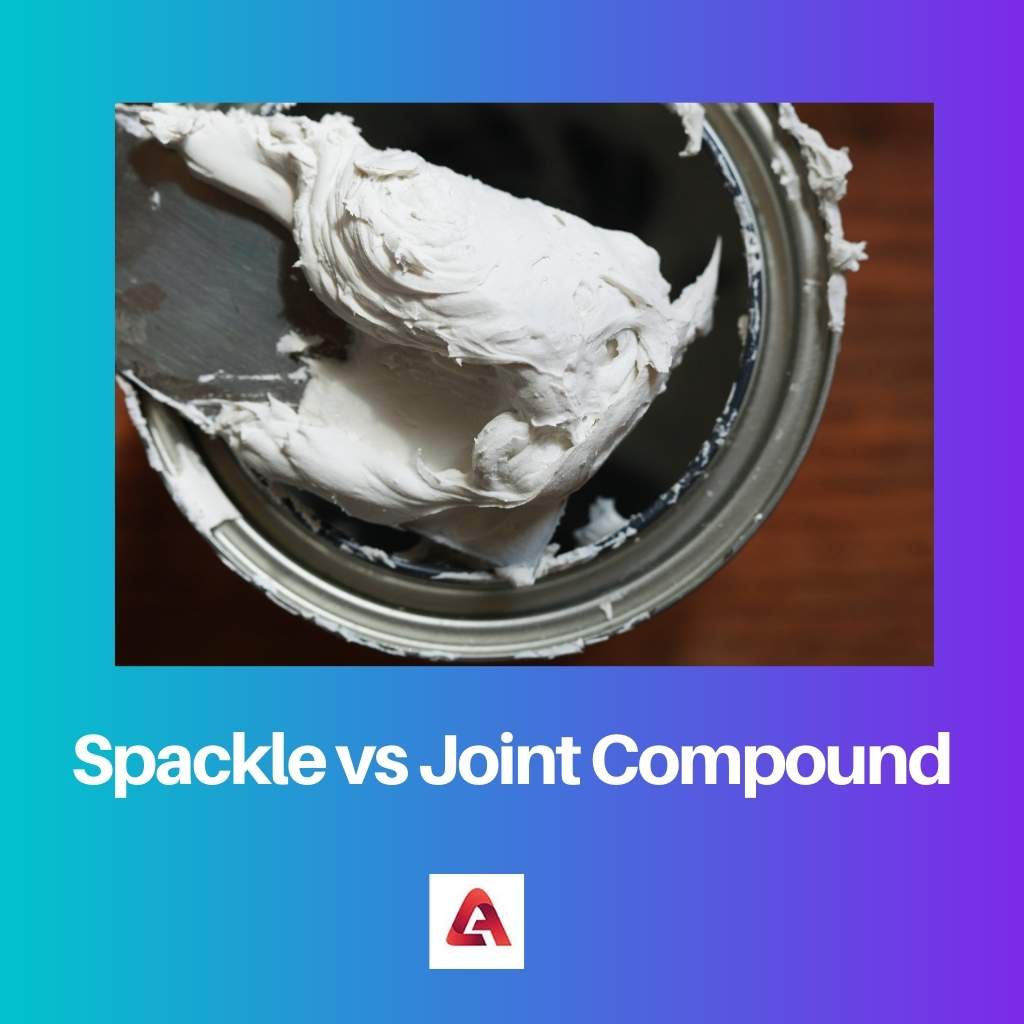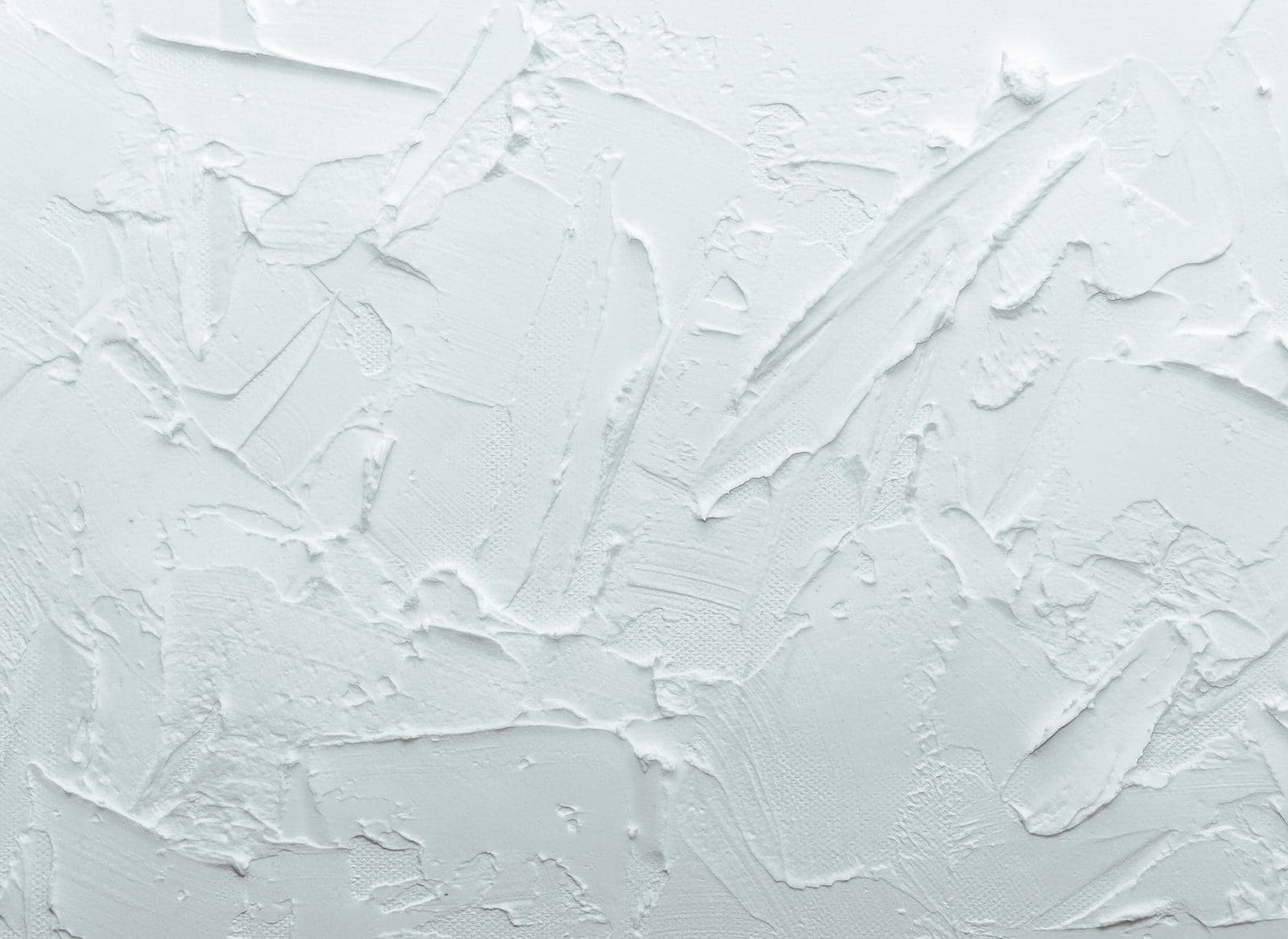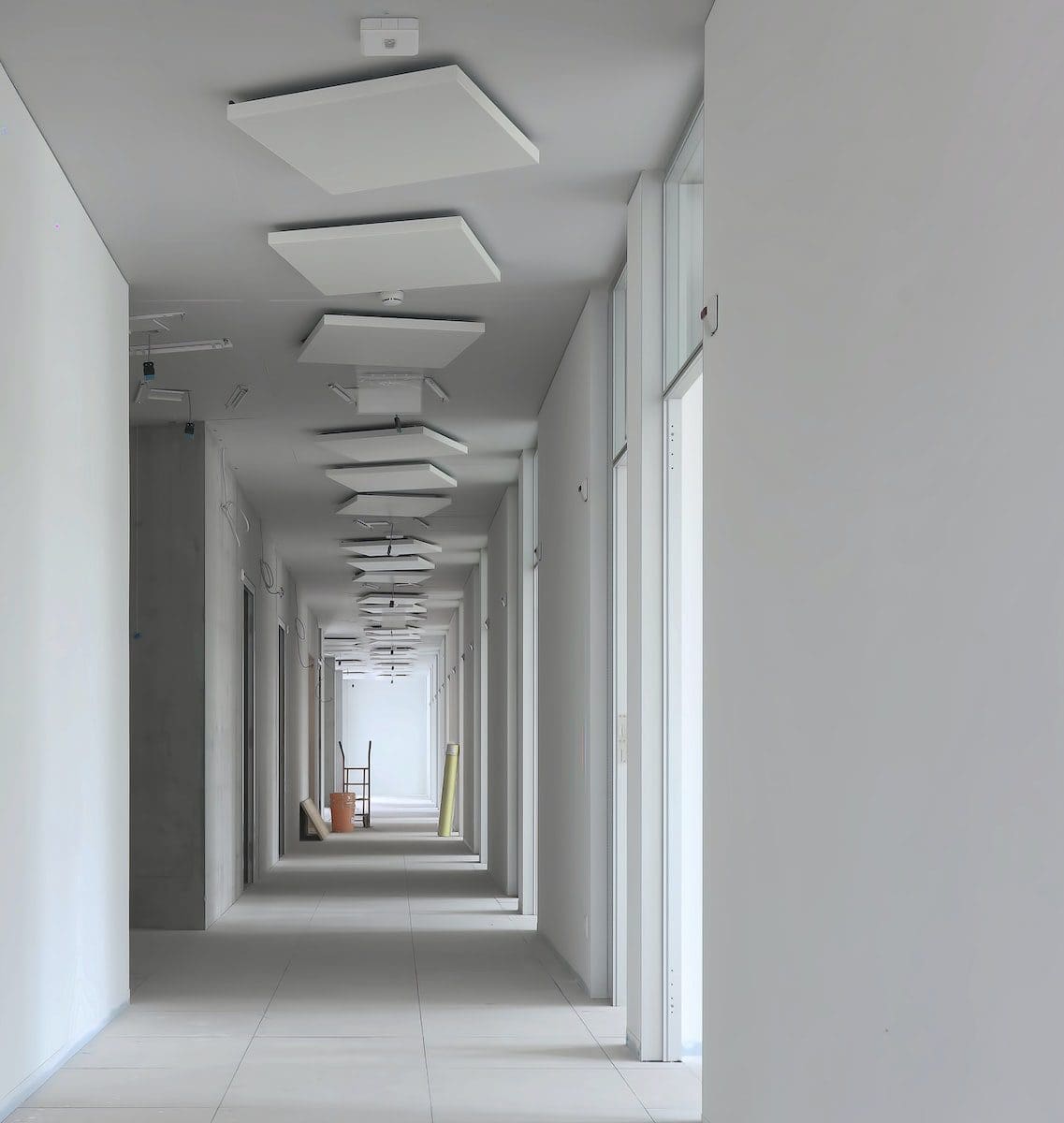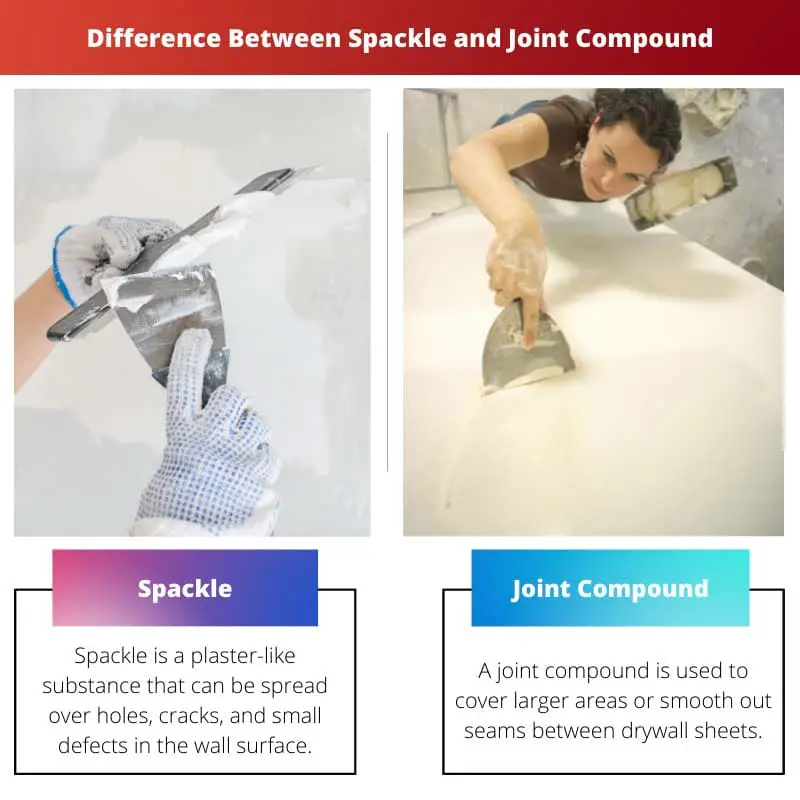Spackle and joint compounds are two of the most commonly used materials for filling holes, cracks, and other imperfections in walls. It is important to know the difference between these two products.
Spackle or joint compound is needed to fill cracks When you are tiling, repairing, or painting your home. Spackle is made from gypsum and water. The joint compound is also made from gypsum but has sand added to it.
Key Takeaways
- Spackle is a lightweight compound used for filling small holes and cracks.
- The joint compound is thicker and primarily used to tap drywall seams.
- Spackle dries more quickly than joint compound, making it ideal for minor repairs.
Spackle vs Joint Compound
The difference between a Spackle and a Joint compound is that a Spackle has a liquid texture, but a Joint Compound has a consistency that is a little thicker. Spackle is a type of putty that is used to fill holes or cracks in plaster. A joint compound is used to seal gaps and seams in drywall.

Spackle is a plaster-like substance that can be spread over holes, cracks, and small defects in the wall surface. Spackle is made of gypsum, which is a mineral that can be used to make plaster.
A plaster-like substance that can be spread over holes, cracks, and other small defects in the wall surface.
A joint compound is used to cover larger areas or smooth out seams between drywall sheets. A compound that is used to cover larger areas or to smooth out seams between drywall sheets is called a “joint compound.”
It’s available in white, which matches the color of the wallboard. A joint compound is used to cover larger areas of drywall or smooth out seams between sheets.
Comparison Table
| Parameters of Comparison | Spackle | Joint Compound |
|---|---|---|
| Usage | Small Repair | Large Repair |
| Quality | Thicker | Thinner |
| Spreading speed | Hard | Not do hard |
| Crackle | Less | More |
| Cost | Expensive | Cheap |
| Compounds | Gypsum, binding agents | Gypsum, limestone |
What is Spackle?
Spackle is a liquid putty that comes in a tin can. It is used to fill holes and cracks, while joint compound is made of cement-like material that dries into rock-solid mass.
While both products come in similar packaging, spackle has a liquid texture, and the joint compound has the consistency of peanut butter.
Spackle is a type of putty that is used to fill holes or cracks in plaster. It’s made from gypsum and water, with small amounts of other compounds added for various purposes.
A type of cement-based adhesive, joint compound is used to seal gaps and seams in drywall. Both products are white. A spackle is a liquid putty that comes in a tin can.
A spackle is a liquid putty that comes in a tin can. It is used to fill holes and cracks in walls and woodwork, and it can also be used to fill nail holes. Spackle is most commonly used in the United States. A spackle is a liquid putty that comes in a tin can.
It is used to fill holes or cracks in walls, ceilings, and woodwork. It is used to fill in cracks, holes, and other imperfections on the surface of walls before painting or plastering.

What is Joint Compound?
A joint compound is a powdery cement mixture used to cover cracks in walls. The trowel is used to apply a joint compound. When it dries, the joint compound forms a smooth surface that can be painted or wallpapered over.
A joint compound is a mixture of cement, sand, water, and an additive that allows it to harden after it dries.
It’s used in home repair to fill gaps between wood surfaces that aren’t flat or smooth. A joint compound is a type of filling used in the construction industry.
It comes pre-mixed and has to be troweled on directly to wood joints after they have been sanded together.
The joint compound fills the gaps between two pieces of wood, thus creating a smooth surface that can be painted or stained.
Concrete is a mixture of aggregate, sand, and cement. The percentage of each ingredient varies according to the type of concrete being made. When sand and gravel are used as aggregate, we refer to them as coarse aggregate.
Cement is the glue that holds all the ingredients together and accounts for about 10 percent of the weight of concrete.
It comes in various types, including polyurethane-based compounds, vinyl-polymer compounds, and silicone-modified asphaltic base compounds. The joint compound dries into a smooth finish that can be painted over with paint or wallpaper.

Main Differences Between Spackle and Joint Compound
- Spackle is used for a small repair, and Joint Compound is used for large repair.
- Spackle is thicker than Joint Compound.
- Spackle is harder to spread than Joint Compound.
- Spackle is less likely to crackle as compared to Joint compounds.
- Spackle is more expensive than Joint Compound.
- Spackle has gypsum and binding agents, whereas Joint Compound has gypsum with limestone.




